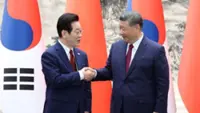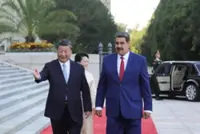Vehicles make their way amid heavy traffic conditions during snowfall in Wuhan, in central China's Hubei province on Feb 6, 2024. — AFP
Long waits at highway charging stations, rapid battery depletion in freezing snow and limits on electric vehicles on car ferries because of safety fears have combined to make the Lunar New Year holiday a frustrating experience for China’s growing number of EV drivers.
For Dai Junqi, the 600 kilometer (373 mile) trip from Shenzhen to her hometown in her Model Y Tesla turned into a 13-hour saga. The combination of high-speed freeway driving with the air-con on meant she could only get about 75% of the car’s designed 420 kilometer range per charge, necessitating two recharging stops.





